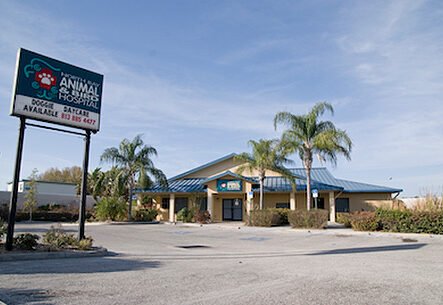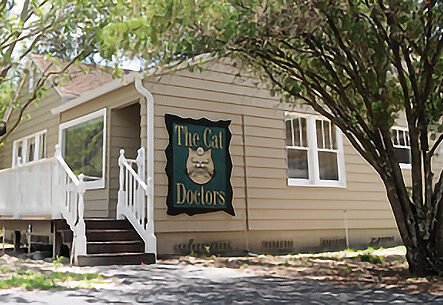Rats
What to expect from your rat
Rats make excellent pets, being clean, quiet and easy to care for. Strong bonds can quickly be formed with these intelligent, inquisitive and affectionate animals. Because rats are so social (free-ranging rats live communally), it is best for at least two same-sex or altered rats to live together. Single rats must receive more attention than most pet owners are willing to give. Rats are usually very gentle and reluctant to bite unless they are frightened. Most rats will allow you to pick them up by placing your hand firmly over the back and rib cage, or by scooping them up with both hands.
Vital statistics
- Average adult body weight: Females: 250-400 grams, Males: 450-520 grams
- Age of sexual maturity: 5-7 weeks
- Average life span: 2-3 years
Is your rat a male or a female?
Male rats have a large scrotum, making them easy to differentiate from female rats. Also, the distance from the anus to the genitals is roughly twice as long in male rats as in female rats. Only female rats have nipples.
Families interested in breeding their rats must first decide how to find homes for all the babies. Then, some preparatory reading is recommended. The average litter is 12 and the gestation period is 21-23 days. The babies should not be weaned until they are 4-5 weeks old.
What do rats do all night?
Rats are mostly nocturnal, so evening is the best time to observe and interact with them. Daily attention, handling, and regularly scheduled play times at least 30 minutes in length will lead to a calmer, gentler pet. Rats like to explore their surroundings and favor tubes, climbing toys, exercise wheels and areas to investigate. Safe items on which to gnaw, such as commercial chew sticks, pesticide-free hardwood branches and ink-free cardboard, are also necessary. Rats thrive best in full darkness at night; nightlights or uncovered windows in their environment should be avoided.
What should you feed your rat?
Rats are omnivorous, eating both plant and animal foods. Commercially available pelleted diets made specifically for rats (e.g., by Teklad, Mazuri, Wayne) are adequate to meet nutritional needs. Rat blocks (pellets) should be offered free-choice. The best treats are fresh fruits and vegetables. Poor nutrition can lead to weight loss, obesity or overall ill health.
Fresh water should be available at all times, ideally provided via a drinking bottle. The bottle and sipper tube should be cleaned each time the bottle is refilled, making sure the sipper tube properly functions.
How to keep your rat healthy, happy and safe
- Handle gently.
- Provide daily playtime.
- Maintain a clean environment to minimize stress and the risk of respiratory disease.
- Avoid overcrowding.
- Feed a fresh, high quality pelleted diet formulated specifically for rats/rodents.
- Provide fresh water at all times.
- Frequent lump checks and weight, teeth and respiratory health examinations are recommended in order to quickly observe and treat any impending health problem.
- Check fecal pellets: they should be firm, oval, yet contain moisture. Constipation or dehydration may be indicated if stools are hard, dry and smaller than usual; illness may be present if feces are overly soft.
- Monitor water bottle levels.
Housing for a single pet rat should:
- be at least 14” x 24” x 12” — the bigger, the better
- be made of safe, cleanable, escape-proof material
- have solid flooring of plastic or metal, large enough to allow nesting, burrowing and exercise areas
- contain bedding material, which should be changed about once a week
- include suitable substrates, such as shredded paper (non-inked), recycled newspaper composite materials or pellets, hardwood chips or shavings and compressed wheat straw. Cedar chips should be avoided as they may be toxic
- be maintained at room temperature (65-80 F) with 40-70% humidity
- include a hammock, hide box or sleeping box
- be located off the floor and away from windows and heating/cooling vents
It is important to prevent rats from accessing:
- dogs, cats and ferrets without proper introduction and supervision
- small children without supervision
- electrical cords or wires
- locations where rats can fall
- pesticides and other toxins
- tobacco and cigarette smoke
- cedar and pine shavings
- ammonia from a dirty cage
- elevated floors or ramps made of 1.27 x 2.54 cm wire mesh
- items you do not want your rat to chew
- toxic houseplants
- other small pet mammals and birds (that a rat can kill)
- temperatures more than 90 F
- wire exercise wheels
What your veterinarian looks for in a healthy rat
- Bright, shiny eyes free of discharge or red secretions
- No sneezing, wheezing or labored breathing
- Nostrils free of discharge
- Teeth and claws even, not overgrown
- Firm body weight, neither thin nor obese
- Alert, inquisitive nature
- No abnormal lumps or scabs
Most common disorders of rats
- Respiratory disease (mycoplasmosis, secondary infections, viruses)
- Congestive heart failure
- Mammary tumors
- Cancer
- Ectoparasitism
- Pituitary tumors
- Abscesses
- Obesity
- Pododermatitis (foot infection)
- Malocclusion
- Sudden death/trauma
- Nephrosis
- Overheating/chilling/heat stress
- Paraplegia in geriatric rats
The most common health problem in rats is respiratory disease. Visiting your exotic animal veterinarian for routine health checks will help prevent many diseases and support you in having a fun, satisfying relationship with your pet rat.
Background Information
The most common rat species kept as a pet is Rattus norvegicus. Free-ranging Norway rats live in and about human habitations and on ships and have become naturalized by commerce in most parts of the world. The rats bred in captivity for several purposes — for feeding captive reptiles, for research in laboratories and sold as pets — are all fully domesticated descendants of the free-ranging Norway rat. Pet rats come in many different colors, including albino (white with pink eyes), beige, black, brown, blue and gold, and in many different patterns, including Siamese, spotted and hooded. Albino rats have poor eyesight, and all rats rely on whiskers and scent for sensory input, sometimes weaving their head back and forth to focus on objects.
Courtesy of Zoological Education Network
Tampa, FL 33615 (View map)
Tampa, FL 33647 (View map)
Tampa, FL 33617 (View map)
Tampa, FL 33647 (View map)








